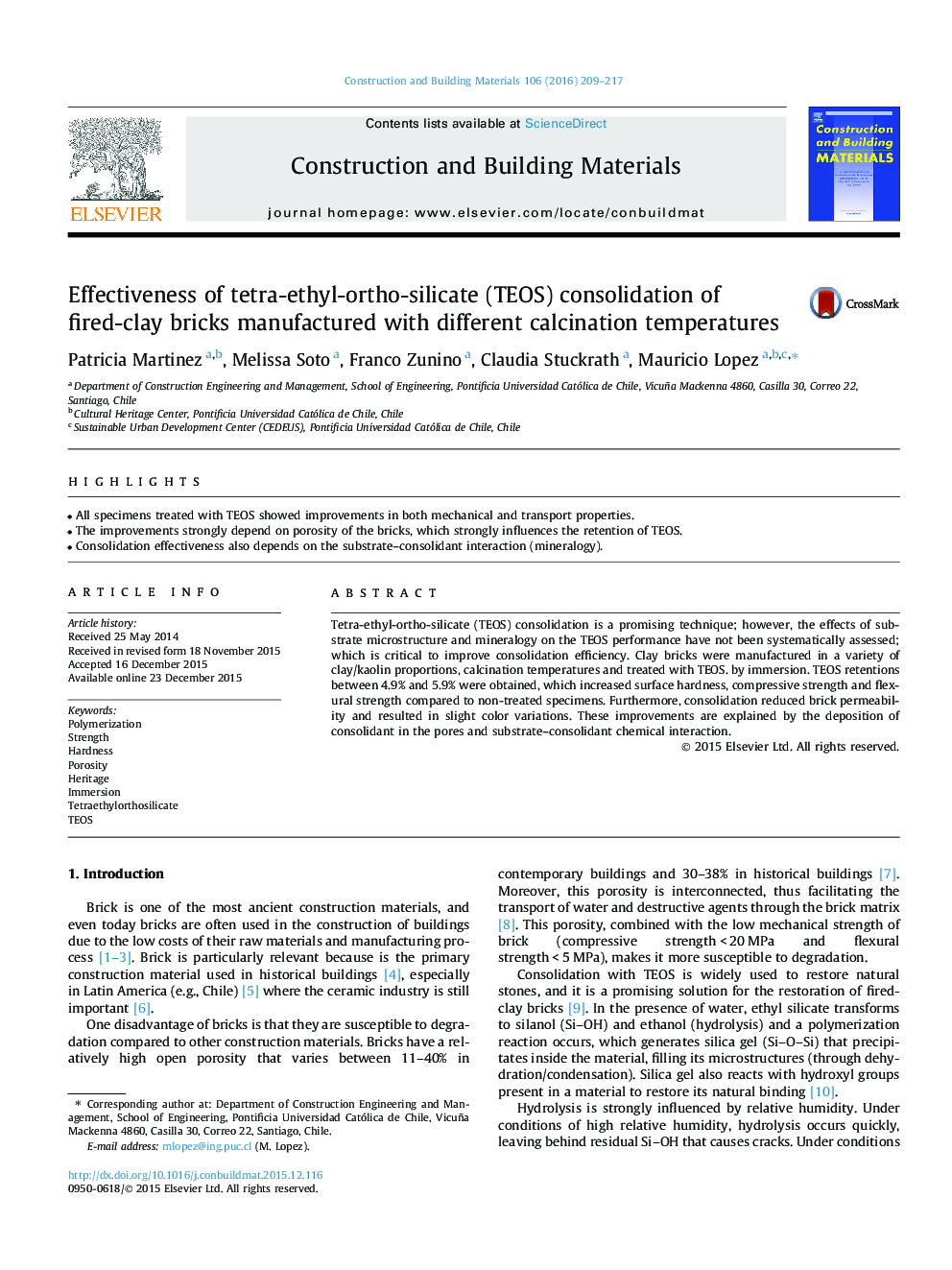| Article ID | Journal | Published Year | Pages | File Type |
|---|---|---|---|---|
| 256482 | Construction and Building Materials | 2016 | 9 Pages |
•All specimens treated with TEOS showed improvements in both mechanical and transport properties.•The improvements strongly depend on porosity of the bricks, which strongly influences the retention of TEOS.•Consolidation effectiveness also depends on the substrate–consolidant interaction (mineralogy).
Tetra-ethyl-ortho-silicate (TEOS) consolidation is a promising technique; however, the effects of substrate microstructure and mineralogy on the TEOS performance have not been systematically assessed; which is critical to improve consolidation efficiency. Clay bricks were manufactured in a variety of clay/kaolin proportions, calcination temperatures and treated with TEOS. by immersion. TEOS retentions between 4.9% and 5.9% were obtained, which increased surface hardness, compressive strength and flexural strength compared to non-treated specimens. Furthermore, consolidation reduced brick permeability and resulted in slight color variations. These improvements are explained by the deposition of consolidant in the pores and substrate–consolidant chemical interaction.
